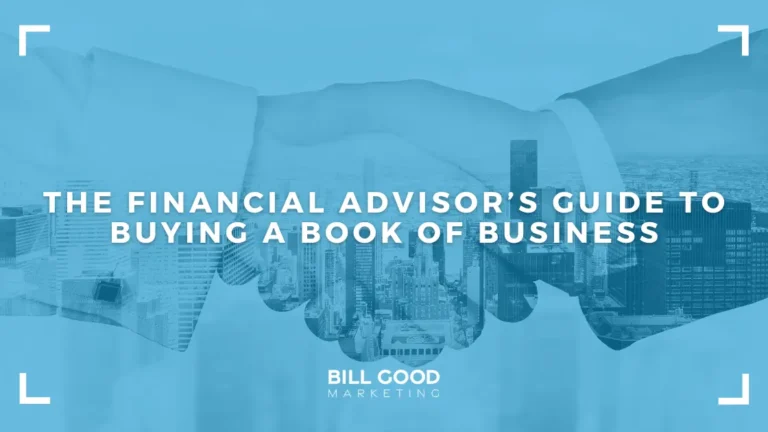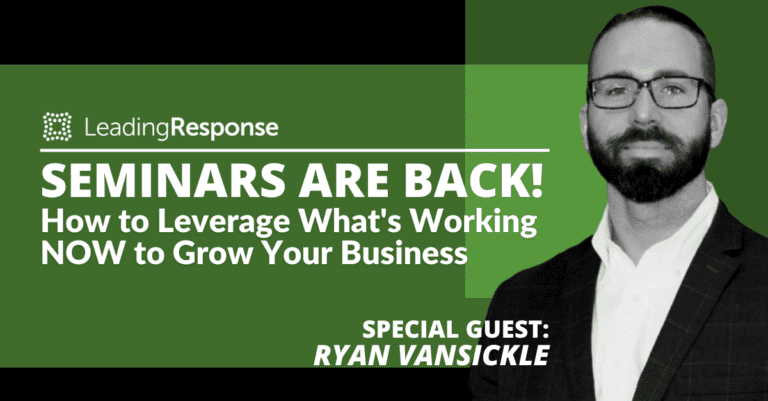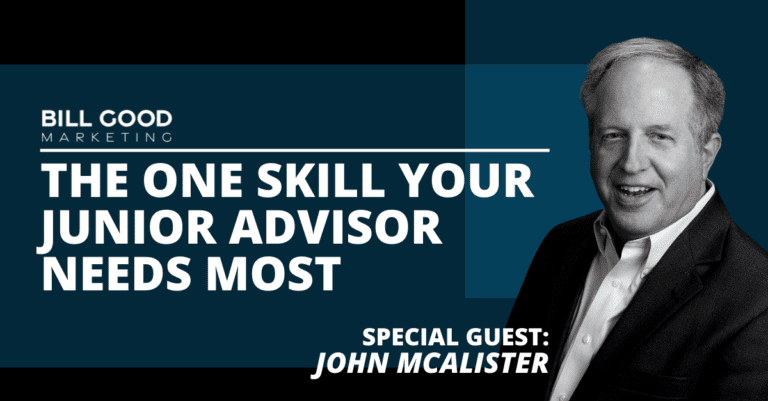What does it mean to truly grow?
For financial advisors, growth isn’t just about more assets under management (AUM). It’s about relationships, trust, and the impact you leave on the lives of your clients. A financial advisor’s book of business isn’t a collection of accounts; it’s a collection of stories—each one shaped by the decisions, dreams, and ambitions of real people.
Buying a book of business is an opportunity to step into those stories. To take what someone else has built and turn it into something even greater.
But let’s be honest: it’s not for the faint of heart.
It requires more than just a purchase agreement and a handshake. It demands intention, clarity, and a commitment to making the transition seamless—not just for the clients you inherit, but for your own team and business.
Yes, you’ll need to know the nuts and bolts—valuation, due diligence, onboarding.
But beyond the technical details lies the real work: building trust with a new client base, aligning your financial planning philosophy with their needs, and ensuring a smooth transition that retains relationships and maximizes retention rates.
This isn’t just about growing AUM or boosting cash flow. It’s about creating a financial advisor practice that’s resilient, scalable, and focused on what matters most: delivering exceptional service.
Whether you’re looking to dominate your niche, expand your RIA, or simply take the next step in your financial advisory practice, buying a book of business is one of the most powerful moves you can make. But only if you do it right.
Ahead, we’ll explore how to approach this process thoughtfully, how to find the right opportunities, and how to ensure the transition works for you, your team, and your clients. Because when done well, acquiring a book of business isn’t just an investment in your practice—it’s an investment in your future.

Why Buy a Financial Advisors Book of Business?
There’s a temptation to chase growth for the sake of it. To see a book of business as just numbers—a neat addition to your AUM, a shortcut to more clients, more revenue, more success. But that’s not why you’re here.
The real reason to buy a book of business? Transformation.
When done right, acquiring a financial advisor’s book of business isn’t just a way to grow your client base—it’s an opportunity to elevate your entire financial advisor practice. It’s a chance to reimagine your approach to wealth management, build deeper client relationships, and uncover untapped potential that others may have overlooked.
But let’s get specific.
Good Reasons to Buy a Book of Business
- Expand Your Reach: A well-aligned book of business introduces you to new clients who fit your ideal profile. It’s not just about quantity; it’s about quality. These are clients who value the services you provide and are primed for financial planning conversations.
- Uncover Hidden Opportunities: Many books of business are underutilized gold mines. Think of assets sitting in real estate, taxable accounts, or unstructured portfolios. With the right strategy, these can become the foundation for significant growth in profitability.
- Strengthen Your Legacy: For CFP® professionals and independent financial advisors, buying a book of business can fast-track your journey to becoming a trusted leader in your niche or local market. It’s about more than numbers; it’s about positioning yourself as the go-to professional in your community.
Bad Reasons to Buy a Book of Business
- Focusing Only on AUM: It’s easy to be seduced by the headline numbers. But a book of business with impressive AUM can still be a poor fit if it comes with complex client relationships, high service demands, or misaligned investment philosophies.
- Ignoring Retention Risks: Not every client will make the transition smoothly. Without a well-thought-out onboarding strategy, even the best opportunities can turn into retention nightmares.
- Underestimating the Work: A successful acquisition requires due diligence, a solid transition plan, and systems that ensure a seamless experience for your team and clients. Without these, even the most promising acquisition can falter.
Aligning with Your Vision
The decision to buy a book of business isn’t just about where you are today—it’s about where you’re going. It’s about creating a financial advisor practice that’s scalable, resilient, and capable of serving both your current clients and new clients with excellence.
Done well, this process will challenge you to refine your systems, strengthen your team, and elevate your value proposition. It’s not about the easy wins. It’s about the meaningful ones.
So, before you start looking for potential sellers or calculating a purchase price, ask yourself: why do you want to do this?
The answer to that question will shape everything that follows.

How to Prepare to Buy a Book of Business
Preparation is the quiet work that sets the stage for greatness. It’s not flashy. It’s not the kind of thing that makes headlines. But when the time comes to buy a book of business, preparation is the difference between thriving and merely surviving.
Here’s the truth: adding a new client base to your financial advisor practice will stretch your systems, your team, and your patience.
If your foundation isn’t rock-solid, the weight of that growth could strain every part of your operation.
So, where do you start?
1. Get Your Team Ready
Your team is more than a group of employees—they’re the backbone of your practice. If you’re going to bring in new clients, you need to ensure your team has the bandwidth and expertise to handle the additional load.
Every team member should know their role in the onboarding process.
- Who’s responsible for managing new portfolios?
- Who handles client retention strategies?
- Who ensures compliance with regulatory requirements?
And don’t forget about hiring. If your current staff is already operating at capacity, now is the time to bring on additional help. Whether it’s a client service associate or a junior advisor, you need the right people in place to ensure a smooth transition for new clients.
2. Refine Your Systems
Systems are what separate the exceptional from the average. Before you even think about approaching potential sellers, ask yourself:
- Is my CRM optimized to handle a larger client base?
- Are my communication and prospecting workflows automated, consistent, and scalable?
- Do I have a defined process for categorizing and prioritizing clients (e.g., Platinum, Gold, Silver tiers)?
If you’re still manually managing tasks or relying on outdated tools, now is the time to invest in technology. A strong system ensures that every client—whether they’re a referral, a long-term client, or part of a newly acquired book—gets the same level of high-quality service.
3. Strengthen Your Value Proposition
New clients don’t know you yet. They don’t understand what sets you apart as a financial advisor or why they should trust you with their assets. That’s why your value proposition needs to be crystal clear.
What makes your financial advisory practice unique?
Maybe it’s your comprehensive financial planning approach, your expertise in wealth management, or your ability to serve niche markets like small business owners or real estate investors. Whatever it is, it needs to shine through in every interaction.
This is also the time to refine your social media presence. Potential buyers might look to your online footprint to understand your brand, and new clients will do the same when they’re introduced to you.
4. Have a Clear Transition Plan
A well-executed transition is about more than client retention—it’s about creating a seamless experience for everyone involved.
Define how you’ll introduce yourself to the new client base. Will there be a series of welcome letters? Phone calls? In-person meetings?
Ensure every step of the process is mapped out so clients feel confident in the transition.
And don’t overlook the regulatory side. Ensure your practice is prepared for compliance checks and that all systems align with legal standards to avoid hiccups during the acquisition process.
Preparation may not be glamorous, but it’s where the magic begins. A well-prepared financial advisor practice doesn’t just survive an acquisition—it thrives. And when your systems, team, and strategy are all aligned, you’re not just ready to buy a book of business—you’re ready to make it a cornerstone of your success.
How to Find the Right Financial Advisor Book of Business
It’s easy to believe that the hardest part of buying a book of business is the negotiation. But the truth is, the real challenge lies in finding the right one. The perfect fit isn’t just a matter of numbers—it’s about compatibility, vision, and long-term potential.

3 Places to Look when Buying a Book of Business
Books of business don’t just appear out of thin air. You need to know where to look and, more importantly, how to look.
1. Broker-Dealer Networks
Many broker-dealers have internal matchmaking services to connect selling advisors with potential buyers. These networks are often curated, offering opportunities that align with your financial advisory practice.
2. Professional Matchmaking Services
Platforms like Kingdom Advisors or niche services that cater to specific markets (e.g., independent financial advisors or RIAs) can help you find sellers who align with your values and goals.
3. Conferences and Events
Industry gatherings aren’t just for continuing education; they’re where conversations spark, relationships form, and deals happen. A casual conversation at a conference could lead to your next big opportunity.

5 Things to Look for When Buying a Book of Business
When evaluating potential sellers, the goal isn’t just to find a book with impressive AUM. It’s to find one that complements your existing client base and aligns with your vision for growth.
1. Client Base Compatibility
Does the seller’s book align with your ideal client profile? Are they retirees with high net-worth, or younger clients just starting their wealth-building journey? The makeup of the book will determine how well it integrates into your current workflows and should be considered during the business valuation.
2. Service Model Alignment
Evaluate whether the existing client service model fits your practice. If the selling advisor promises monthly in-person meetings but you operate primarily through virtual consultations, that misalignment could create client retention risks.
3. Geographical and Niche Fit
If the book is outside your area, consider how you’ll serve those clients. Virtual meetings, local partnerships, or even travel could be required to maintain those relationships.
For niche markets, like small business owners or real estate investors, ask whether the book expands your expertise or dilutes your focus.
4. Growth Potential
Look for books with untapped opportunities during your business valuation. Accounts with underutilized portfolios, unstructured financial planning, or neglected referral networks. A poorly managed book might seem like a red flag, but it’s also an opportunity to add value and build trust.
5. Team and Resources
Will you inherit team members who are essential to maintaining client relationships? A long-standing assistant or service advisor could be the glue that holds those relationships together during the transition period.

4 Questions You Must Ask Potential Sellers as a Part of Your Due Diligence
Questions are your compass. Your due diligence. They guide the conversation, uncover hidden truths, and reveal whether this book of business is a stepping stone or a stumbling block. The right questions don’t just gather data; they illuminate alignment—between you, the clients, and the selling advisor’s legacy.
1. What’s your timeline for selling?
This question may seem straightforward, but it’s loaded with meaning. A potential seller without a clear timeline often signals a deeper hesitation.
- Are they emotionally attached to their practice?
- Are they struggling with the idea of handing over their life’s work?
Their answer—or lack of one—can help you gauge their readiness and your potential hurdles.
A committed timeline gives you a framework to plan the transition, onboard clients, and integrate the new book without chaos. Without it, you risk a never-ending wait, stalled growth, and uncertain outcomes.
2. How have you structured your financial plans/portfolios?
Portfolios tell a story about values.
- Are these investments tailored for high-net-worth clients or built for broad strokes?
- Do they reflect a philosophy rooted in financial planning or a more transactional approach?
Knowing this isn’t just about operational fit; it’s about understanding what the clients expect when they transition to your financial advisor practice. If your wealth management strategy differs too much, you’ll need a plan for bridging the gap and ensuring a smooth transition.
3. What are your expectations for your role post-sale?
This is the question that defines boundaries. Some selling advisors want to stick around, helping you establish trust with the client base. That’s great—if managed well.
But what if they want to stay indefinitely? What if they struggle to step back, leaving you as the financial professional perpetually in their shadow? The answer to this question shapes how you’ll position yourself as the trusted advisor moving forward.
It’s important that you ask specific follow-ups as well:
- Do they expect to maintain communication with clients?
- Will they stay on temporarily as an advisor, or do they plan to exit immediately?
Their answers will help you define boundaries and ensure a smooth transition plan that benefits everyone involved.
4. What’s the makeup of your client base?
Demographics matter, but they’re not the whole picture.
Ask about preferences:
- Do these clients value personal relationships or hands-off service?
- Are they growth-focused investors, retirees drawing down assets, or small business owners navigating complex financial goals?
Each answer shapes how you’ll integrate these clients into your advisory firm. The more you know, the more you can tailor your onboarding process and ensure strong client retention.

3 Red Flags to Watch Out For During the Business Valuation
The allure of a big book of business can blind even the most experienced financial professionals. But every red flag you miss today becomes a problem you’ll regret tomorrow. Recognizing these signals isn’t about paranoia; it’s about protecting your practice and ensuring long-term success.
1. Over-Concentrated Assets
What if 50% of the AUM is tied to one household?
Losing that client isn’t just a setback; it’s a financial earthquake.
Beyond the surface numbers, you need to understand the story. Are these assets stable? Is the client relationship strong? And most importantly, do you have a plan to engage and retain this household during the transition?
A book with diverse and well-distributed assets isn’t just safer—it’s smarter.
2. Complex or Illiquid Products
Beware the shiny objects.
Niche products may look intriguing, but they often come with a hidden cost: complexity.
From regulatory challenges to client confusion, these products can create more problems than profits.
Ask yourself:
- Are these assets aligned with your expertise?
- Can you manage them confidently?
- And will clients feel secure with your approach?
If the answers are shaky, it’s time to reconsider.
3. Hesitation from the Selling Advisor
A hesitant seller doesn’t just delay your growth—they undermine the entire process.
Hesitation often stems from fear: fear of losing identity, fear of client reactions, or even fear of life after work.
If the seller seems uncertain, dig deeper.
- What’s holding them back?
- Can they articulate their concerns?
A seller who’s not ready to commit will only create roadblocks, no matter how promising the book appears.

Build a Legacy, Not Just a Book of Business with Bill Good Marketing
Buying a book of business is much more than a transaction.
It’s the beginning of a story—one where you’re tasked with not just managing assets but fostering relationships, protecting legacies, and creating lasting impact.
For financial planners, it’s a chance to bring their expertise to new heights. For clients, it’s an opportunity to continue their journey with someone who values their goals as much as they do.
This is about more than succession planning or mergers. It’s about becoming the kind of financial advisor who sees opportunity in every challenge and creates value in every relationship. It’s about bridging the gap between the old and the new—ensuring a smooth transition that honors the past while paving the way for a stronger, more resilient future.
But let’s be honest: this isn’t easy.
Onboarding a new client base, maintaining client retention, and ensuring a seamless integration into your business requires more than good intentions.
It demands systems, processes, and a commitment to engagement.
At Bill Good Marketing, we specialize in helping financial services professionals like you navigate these transitions with confidence.
From client onboarding to retention strategies, we provide the tools and expertise you need to make the process seamless. Our proven methods ensure your new clients feel valued and connected, while your existing clients continue to receive the exceptional service they expect.
If you’re a new advisor stepping into your first acquisition or an experienced financial planner looking to expand, we can help you turn this opportunity into a cornerstone of your practice. The right systems don’t just make transitions easier—they make them transformative.
Because at the end of the day, this isn’t just about buying a book of business.
It’s about building a legacy, one client, one conversation, and one decision at a time. Let us help you make it happen.
About the Author

Andrew D. White is the Director of Marketing at Bill Good Marketing, a firm with over 45 years of experience helping financial advisors scale their businesses. With deep expertise in advisor marketing, client acquisition, and retention strategies, Andrew specializes in creating high-impact campaigns that drive measurable results. His insights are grounded in real-world experience, working alongside top-performing advisors to refine prospecting, branding, and practice management strategies.




